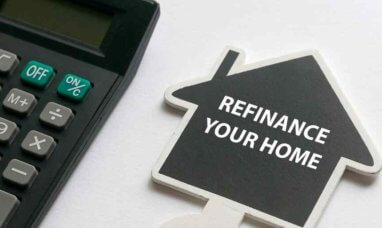Finally found the house of your dreams? That’s great news! Now, it’s time to close on your home. The only obstacle standing in the way of your new doorstep is an enormous pile of paperwork, transaction documents, and legal forms. The closing disclosure form is just one of those many documents, but you have to fill it out with full attention. Otherwise, even the tiniest mistake can result in huge problems.
Learn the important facts about the closing disclosure form by following along below.
What Is a Closing Disclosure Form?
A closing disclosure form contains all the terms, rates, expenses, investments, conditions, rules, etc., that are involved in the buying and selling process of any property.
It is a document that outlines all the elements that are worked into the deal by the buyer, broker, and seller. By comparing the closing disclosure document to your loan estimate, you can later get the green light to process the final paperwork.
Where Does the Closing Disclosure Form Come From?
The closing disclosure form is mandated by TRID, an acronym for the TILA-RESPA Integrated Disclosure rule. These other two acronyms, TILA and RESPA, stand for Truth in Lending Act and Real Estate Settlement Procedures Act. The TRID rule, like many other mortgage rules, is designed by the Consumer Financial Protection Bureau.
If you’re hearing all these terms for the first time, there’s no need to feel overwhelmed. The only thing you need to understand here is that the TRID forms, which include the Closing Disclosure and the ALTA closing disclosure form, are meant to protect your rights as a real estate mediator, buyer, seller, borrower, and lender.
The Closing Disclosure Three-Day Rule
As a part of the TRID regulations on closing disclosure, the parties who receive the form have three business days to go through its contents and finalize the deal conditions.
Why three days? Why not sign immediately? Well, that’s one of the TRID guidelines to ensure smooth, efficient dealing when it comes to the official deal closing. The primary purpose of the closing disclosure is to double-check and cross-check everything from mortgage conditions to the annual payment rate before the deal is finalized.
During the three-day period, the borrowing party checks for any fraud, miscommunication, loopholes, or discrepancies present in the particulars of the deal. What are your installment criteria? Who are the official partners of the deal? Are there any third parties involved? These are some of the questions that should be answered during this period.
This three-day rule helps to save the involved parties from any unsavory surprises on the closing day.
The three-day rule can be waived under two circumstances.
The first exception is if any of these changes are made to your deal:
-
-
- A change in the APR of the loan
- A prepayment penalty on the loan
- Any change to the loan product, such as switching from an adjustable to a fixed-rate mortgage
-
In this case, the closing disclosure form is revised, and a new one is issued with another three-day period.
The second condition is if you’re in a bona fide personal emergency that makes it completely impossible for you to sign the form. Some examples include an accident, a death, or a robbery. In this case, there’s no new three-day period. Instead, the person unable to sign the form can suggest a feasible duration of their own.
Sample Closing Disclosure Form
The closing disclosure form is a fillable 5-page agreement that is available on government websites, both state and federal, as well as at real estate firms. Here’s a breakdown of what you can expect on the five pages of your closing disclosure form:
Page One: Main Information
Here, you’ll find closing information, such as:
-
-
- Dates of issuance, settlement, and disbursement
- Agency or brokers involved
- File credentials
- Closing price
- Property details
- Transaction information, which will include borrower, seller, and lender details
- Loan information and terms, such as the term, amount, purpose, prepayment penalty, balloon payment, and cash estimates.
-
Pages Two and Three: Closing Cost
-
-
- These consist of details regarding closing costs:
- Origination changes, services shopped for and not shopped for by the borrower
- Taxes and government fees
- Prepaid fees
- Escrow payments
- Any other payments that have been worked into the total cost at closing
- Calculation breakdowns, such as credits, down payment, and deposit
- Transaction summaries of the entire procedure
-
Pages Four and Five: Additional Information
The final two pages sort out loan conditions for:
-
-
- Assumptions
- Demand features
- Partial payments
- Late payment
- Negative amortization
- Security interest
- Escrow accounts
- Loan calculations
- Appraisals
- Contract information
- Liabilities after foreclosure
- Refinance
- Tax deductions
-
Then, there’s a chart consisting of the lender’s credentials, mortgage broker, real estate broker, and settlement agency.
The document ends with a receipt that confirms you’ve acknowledged the contents and accept the conditions.
Frequently Asked Questions
What Is a Closing Disclosure Addendum?
A closing disclosure addendum is an add-on to the actual closing disclosure agreement. It specifies the responsibilities of each of the parties involved in the deal as well as the consequences of not fulfilling them.
ALTA Settlement Statements vs. Closing Disclosures: What Is the Difference?
The main difference is who the form concerns. An ALTA agreement is an itemized list of all the costs and expenses relevant to the closing. It concerns all buyers, sellers, brokers, etc. On the other hand, a closing disclosure only concerns the buyers and the purchases that interest them.
How Should I Avoid Messing up My Closing Disclosure Form?
The best way to avoid trouble at the eleventh hour is by keeping a personal record of the Loan Estimate and other costs. You may also want to consult a lawyer while figuring out the form to avoid any surprises that may pop up down the road.
Final Thoughts
Buying a house is exciting. Unfortunately, it is also a complex process with lots of paperwork. A closing disclosure form is meant to protect the buyer from harm where complex loan conditions and laws are involved. The form can be tricky to understand, but if you navigate through it wisely, it can save you from harmful consequences related to the property later on.
Featured Image: Twenty20








